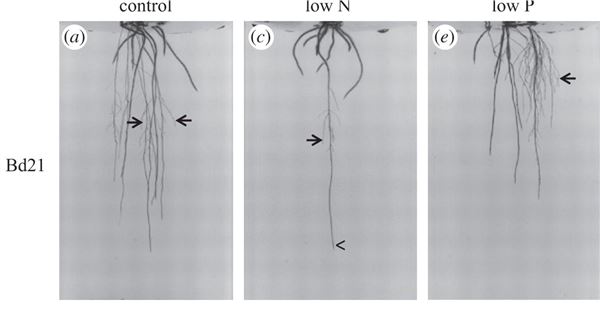Pasture Management
DR. ANTHONY OHMES
JACKSON, MO.
Ideally, grass needs a minimum of 6 inches of growth before grazing for longevity of stand and summer plant survival. Roots mimic what you see on the surface. Plants that are continually grazed at or below 4 inches without a chance for rest will have short roots. Root development stops as plants set seed, therefore areas that cannot be grazed or cut for hay should be mowed to avoid energy going to seed production.
Grass grown on low phosphorus soils have less root development, less phosphorus, magnesium, calcium, and protein content compared to soils with Bray I phosphorus levels of 20 pounds per acre or above. Applying phosphorus on low testing soils has improved magnesium uptake during lush spring growth. Grass tetany has been associated with low levels of magnesium in new spring growth that cattle consume. Do not overlook the importance of soil testing and phosphorus levels in grass pastures.
Now is also the time to control spring weeds such as thistles and buttercup. Cattle prefer grazing pastures where weeds have been controlled according to a study by Kevin Bradley, MU Extension Weed Scientist. View the link to a video on the study Dr. Bradley conducted: https://www.youtube.com/watch?v=qXhBTkpBlWU .
Products containing 2,4-D, dicamba, triclopyr, picloram, aminopyralid, or pre-mixed products provide good to excellent control of spring broadleaf weeds in pasture. These
Pasture Management products are safe at labeled rates on grass species but can kill or severely injure desirable broadleaves in grass-legume pasture mixes. Always read label for proper rates, target weeds, and grazing or harvest restrictions.
For more information contact a University of Missouri Extension Center and ask for IPM 1031: “Weed and Brush Control for Forages, Pastures, and Noncropland.” You can also find it on the web at: http://extension.missouri.edu/p/ipm1031 ∆
DR. ANTHONY OHMES: Agronomy Specialist, University of Missouri

Pictured: 19 day old - Brachypodium differences in root system architecture on various nitrogen and phosphorus conditions. Representative examples on control (a), low-N (c) and low-P (e) media. Arrows point to lateral roots, arrowheads point to axile roots. - Paul A. Ingram, Jinming Zhu, Aabid Shariff, Ian W. Davis, Philip N. Benfey, Tedd Elich. High-throughput imaging and analysis of root system architecture inBrachypodium distachyon under differential nutrient availability. Phil. Trans. R. Soc. B: 2012 367 1559-1569; DOI: 10.1098/rstb.2011.0241. Published 23 April 2012.